How to Attach a Suppressor to a Non Threaded Barrel
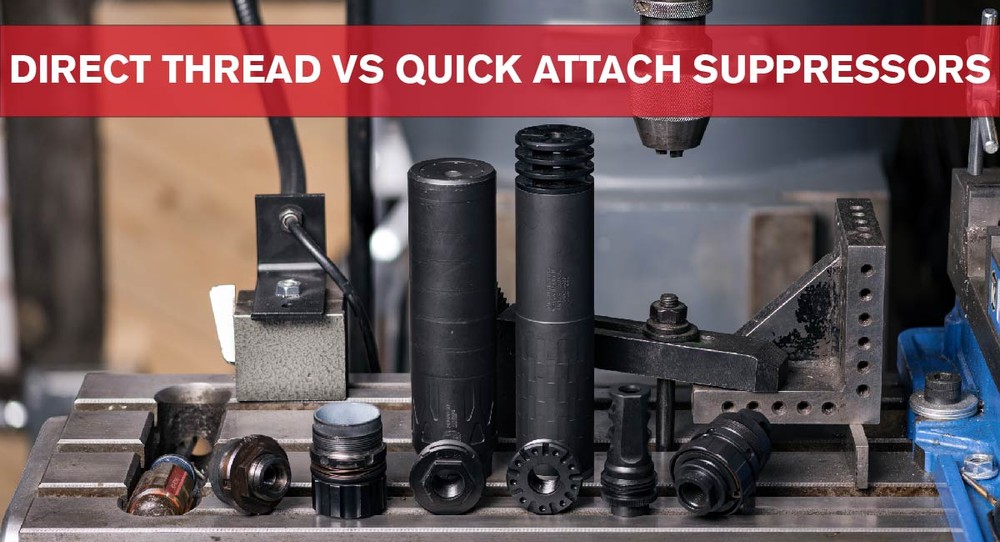

One of the first decisions you'll be faced with when choosing a suppressor is deciding between direct thread vs quick attach suppressors. To throw another option into the mix, there are some suppressors that have interchangeable mounting options with the use of a simple accessory. As you can see, there are more choices than initially meet the eye. You're about to get an explanation of each mounting option, examples of each, and their respective advantages and disadvantages. Let's begin!
Table of Contents
Direct Thread Suppressors
Advantages of direct thread suppressors
Disadvantages of direct thread suppressors
Where direct thread suppressors shine
Locking Quick Attach Suppressors
Locking passive QD Suppressors
Locking active QD Suppressors
Advtanges of locking quick attach suppressors
Disadvantages of locking quick attach suppressors
Where locking quick attach suppressors shine
Non-Locking Passive QD Suppressors
Advantages of non-locking quick attach suppressors
Disadvantages of non-locking quick attach suppressors
Where non-locking quick attach suppressors shine
Interchangeable Mount Suppressors
Advantages of interchangeable mount suppressors
Disadvantages of interchangeable mount suppressors
Where interchangeable mount suppressors shine
Conclusion
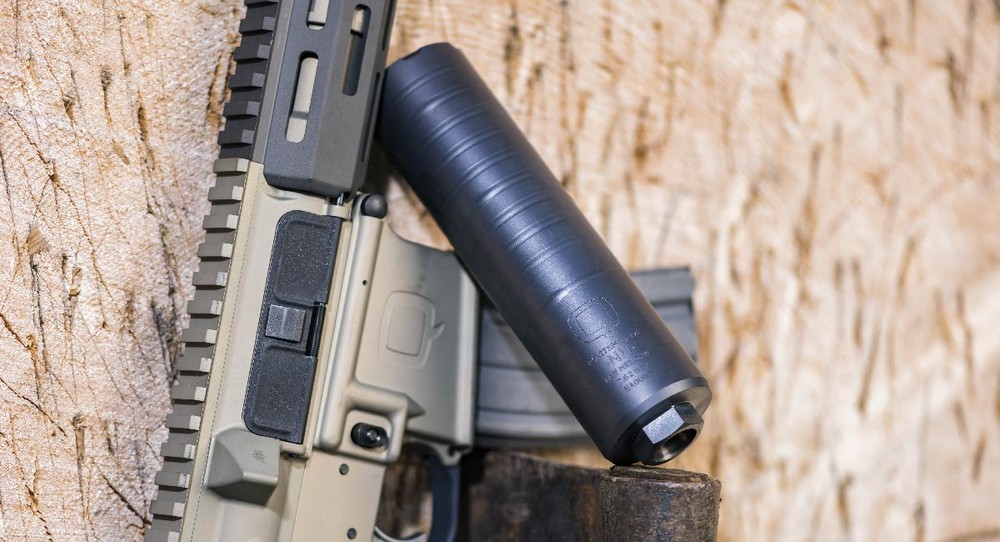

Direct Thread Suppressors
A direct thread suppressor is the simplest type of mounting system. Suppressors that use this direct thread attachment method screw directly onto the threaded barrel of a host firearm. Think of the movies where somebody is attaching the suppressor directly to the end of their barrel - they are using a direct thread mount.
Advantages of direct thread suppressors
- Weight savings
- Cash savings
- Simpler attachment method
- More consistent return to zero
Direct thread suppressors only require a simple threading, so there are less pieces involved in mounting. This does also lend to a slightly lighter suppressor set up. Many people also associate increased accuracy and more repeatable point-of-impact shifts with direct thread suppressors; although, that is changing as newer and better mounting systems are coming onto the market.
Disadvantages of direct thread suppressors
- Backing off
- Only one thread pitch
- Thread protector recommended when not using a silencer
- Can wear down threads
One disadvantage of direct thread suppressors is that they can come unscrewed on their own (also called backing off), especially under higher firing schedules. Another disadvantage is that they are threaded to only one thread pitch, which slims its compatibility down to your firearms threaded in that specific thread pitch.
Where direct thread suppressors shine
A lot of shooters prefer direct thread suppressors on bolt action rifles and other single-feed style firearms, but that isn't a hard and fast rule. Some popular direct thread suppressors include the Griffin GP7 , Q Half Nelson , and Texas Silencer Company Hunter .
Locking Quick Attach Suppressors
(also known as Quick Detach or QD Suppressors)
Quick attach suppressors have a few different attachment methods that we'll be diving into. Specifically, there are 3 main categories that qd suppressors can fall into: locking passive, locking active, and non-locking passive .
Before we get started, let's talk about the difference between locking vs non-locking, and passive vs active qd suppressors.
Locking vs Non-Locking: The difference between a locking and non-locking suppressor is in how the suppressor attaches to the muzzle device . Locking has mechanisms that have to be manually engaged, like a locking collar. Non locking is held in place by friction of the taper mount.
Passive vs Active: These locking systems can usually be determined by whether it takes you one hand or two hands to install the suppressor onto your firearm . With a passive qd suppressor, the locking mechanism is activated by screwing the suppressor on to the host firearm. An active qd suppressor requires you to screw the suppressor on first, and use the other hand to lock the collar on.
Now that we've established a foundation for each of these terms, let's dive a little deeper into our three categories.
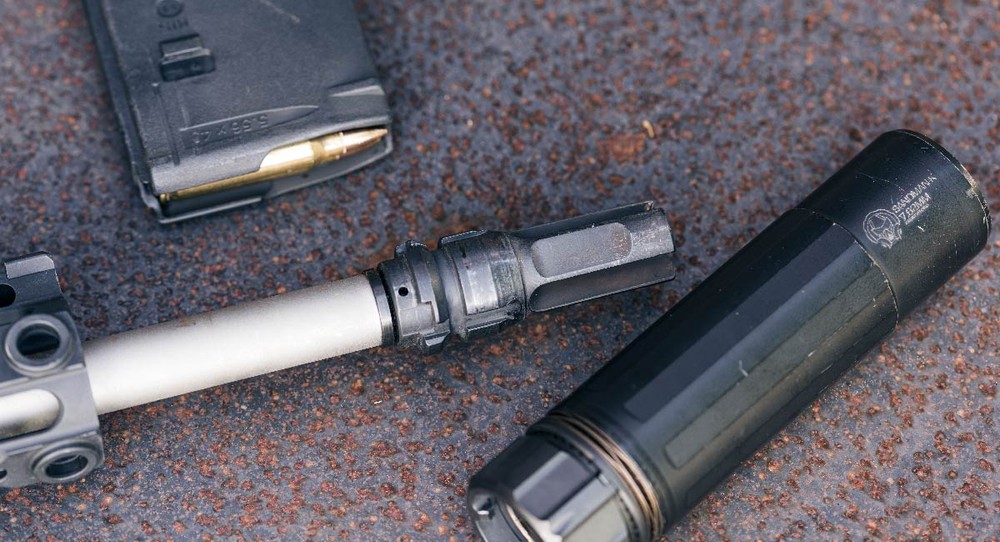

Locking Passive QD Suppressors
This is the most rare out of the qd suppressor bunch. Based on the terms we defined previously, locking passive suppressors need to be manually engaged by screwing the suppressor on to the host firearm.
Examples of this include the Dead Air Sandman-K or the SilencerCo Omega 300 .
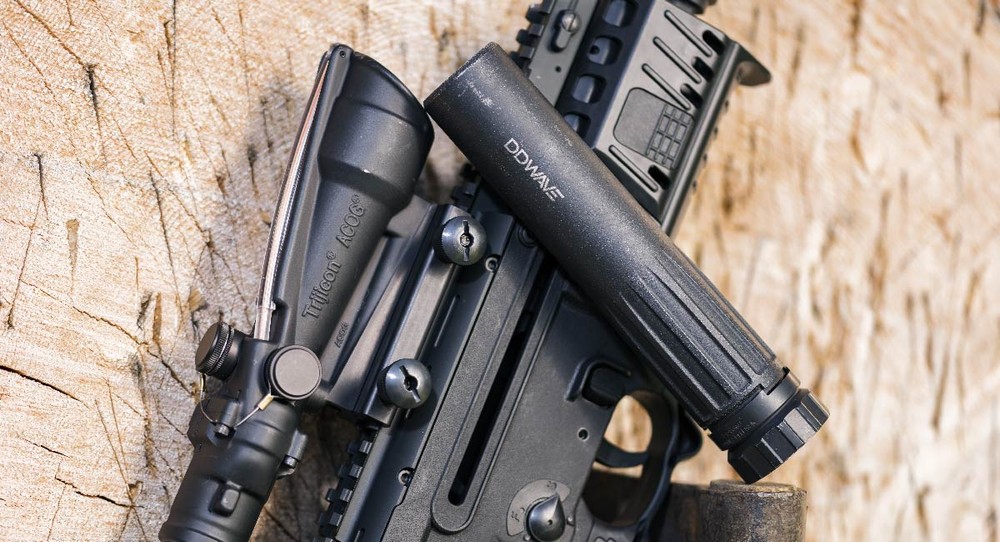

Locking Active QD Suppressors
Locking active quick attach suppressors have to be manually engaged. This means you will screw the suppressor on, and then use another hand to lock the locking collar onto it. A lot of people like using this type of mounting system because it allows for more peace of mind due to the separate locking collar.
The disadvantage of using a locking active mounting system is that you can't put this type of suppressor under a handguard because you need to be able to access the collar that's securing your suppressor onto your host firearm.
Suppressors that use locking active qd suppressors include the Rugged Radiant, SureFire SOCOM 556 RC2, and the Daniel Defense DD Wave QD.
Advantages of locking quick attach suppressors
- Quick mounting
- Secured locking collar
- Increased versatility
- Built in thread protection
One major advantage of a quick attach mount in general is that the mount itself acts as an adapter. As a result, you'll often find that people who are running a 7.62mm suppressor on their 5.56mm weapon are using a quick attach adapter since the threads of the two weapons are different. On top of that, a locking quick attach also prevents the suppressor from coming unscrewed when doing any type of high-volume shooting.
Disadvantages of locking quick attach suppressors
- Not as repeatable (compared to direct thread)
- Additional accessories (more money)
- Heavier due to accessories
The main disadvantage of the earliest quick attach systems was a loss in accuracy - and it tends to be most noticeable with tooth-mount locking systems (tooth mount systems rely on teeth around the mounting device to hold the suppressor in place).
Where Locking Quick Attach suppressors shine
As a result of the advantages we listed above, you'll find that most people tend to prefer locking quick attach suppressors on semi-automatic firearms - like the AR15. Because of technological advancements, QD suppressors are able to lock in and be more accurate than some of their direct thread cousins.
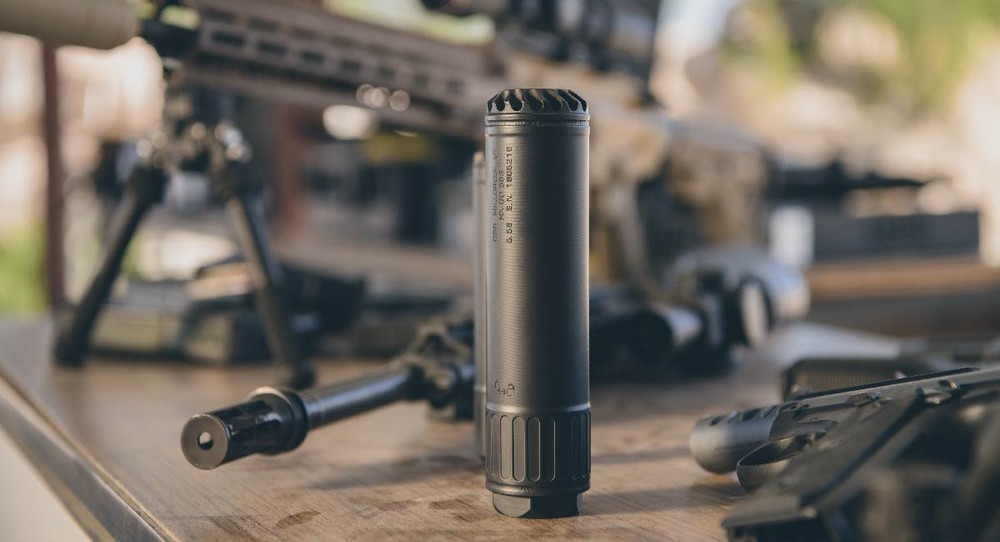

Non-Locking Passive QD Suppressors
Most passive qd suppressors will fall under this non-locking category. This type of mounting system uses a taper mount that activates the locking system by merely screwing the suppressor onto your host firearm. As we explained, with non-locking systems, the suppressor is locked in place using friction from the taper mount.
Advantage of non-locking quick attach suppressors
- Significant surface contact resulting in friction lock
- Secured in place
- Increased versatility
- Built in thread protection
They provide significant surface contact between the suppressor and mount - which acts like a friction lock. As a result, a taper mount suppressor is far less likely to come unscrewed than a true direct thread suppressor.
Disadvantages of non-locking quick attach suppressors
- Not as repeatable (compared to direct thread)
- Additional accessories (more money)
- Heavier due to accessories
The taper actually aligns the suppressor better and more consistently than a true direct thread. Because of suppressor advancements, non-locking qd suppressors give direct thread suppressors a run for their money for accuracy and repeatability. There are some that outperform their dt cousins, but generally speaking, direct thread still wins that race.
Where non-locking passive quick attach suppressors shine
Some of the best taper mount systems include the Q Trash Panda , Griffin Explorr 2 , or the OSS HX-QD 7.62mm . As taper mounts improve, we are seeing more and more precision shooters and hunters using this mounting system.
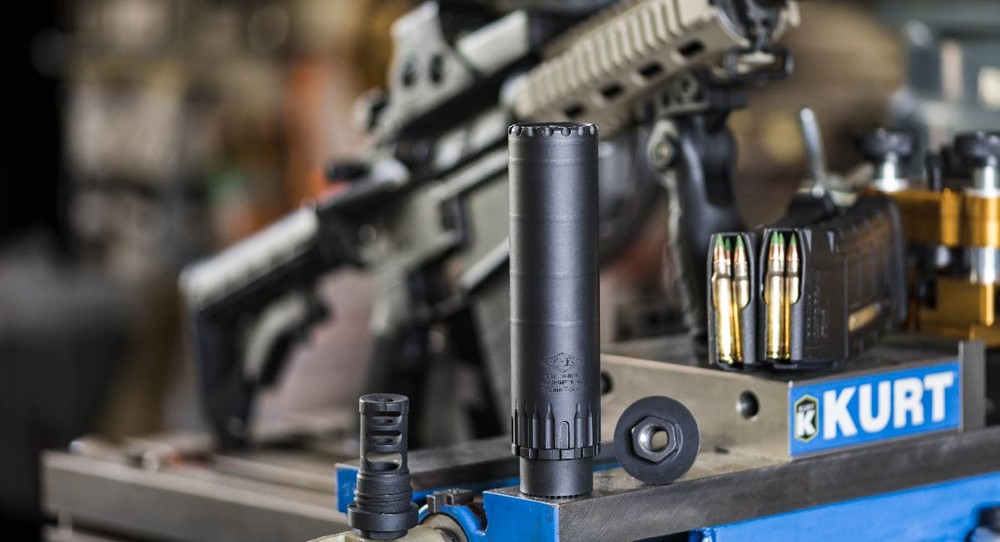

Interchangeable Mount Suppressors
If this is a case of the Wizard of Oz, you'd think that this would be the ruby slipper to take you home. You do get the bonus of direct thread and quick attach features, but it also comes at a cost. If you're looking ahead, you'll see one advantage, but that advantage is huge in the grand scheme of things.
Advantages of interchangeable mount suppressors
- Flexibility to run on hosts
As you can see, there are definitely some benefits to this. The biggest of the bunch is that these suppressors offer the most flexibility. If we're talking about quality over quantity here, this one advantage carries a lot of weight compared to its disadvantage column. Because these silencers have various accessories, their ability to run on almost every single firearm in your vault can definitely save you some cash in the long run.
Disadvantages of interchangeable mount suppressors
- Additional accessories (more money)
- More complex
- Reduced repeatability
The biggest deterrent of buying something that offers so much flexibility is the cost associated with the additional accessories. They are also deemed to be a little bit more complex because there are more parts involved. And, because of the additional accessories, there can be less repeatability compared to its mounting cousins.
Where interchangeable mount suppressors shine
This mounting system allows you to run on the biggest variety of hosts, so if you want one suppressor that fits most of your arsenal, the interchangeable mounting system might be your bread and butter. It does come at a cost (both figuratively and metaphorically) but more and more shooters are seeing it as worth it.
Suppressors like the SilencerCo 36M , YHM Turbo (T2) , and CGS Helios all feature this interchangeable option.
Conclusion
It's great to have options, but we realize that it can be confusing when you first start researching. If you have any questions at all about what mounting system is best for your application - please don't hesitate to contact us, and we're happy to spend as much time as needed to help you understand your options.
How to Attach a Suppressor to a Non Threaded Barrel
Source: https://www.silencershop.com/blog/post/direct-thread-quick-attach-suppressors